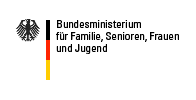Aspects
Gender Aspects Budget
- “male bias”: Research findings within the framework of feminist economy have shown that economic calculations and the corresponding budget are subject to male bias, i.e. are looked at one-sidedly in a way that ignores gender equality and the needs of women. For example, unpaid work, or the “care economy” is not included in state economic calculations although it accounts for a considerable share of GNP. Productive factors such as housework, child-care and nursing care are left out of the calculation, which seriously impairs the effectiveness of the budget as a whole. Gender Budgeting should make it possible to avoid this one-sidedness.
- Prioritising: Not only the budget as a whole, but also individual items, can have a male bias. This is the case when a budget depicts mostly characteristically male needs in items rather than the communal good interests of society as a whole. Interests which do not fit into a stereotype notion of a male norm are then neglected and funded either minimally or not at all. Gender Budgeting supports the avoidance of this male bias.
- Discrimination: Women and men are provided with different economic resources which are constantly being produced and reinforced by structural factors in society. Men, for example, as a rule, are paid more for work of equal value and are thus implicitly favoured in, for instance, tax-splitting between spouses. Gender Budgeting makes it possible to avoid such gender-related inequalities by means of targeted distribution of resources.
Tools for implementing GM in the policy field data/statistics
- The tool “Einführung eines GM Prüfverfahrens im Bundesministerium für Finanzen“ has been developed by Dr. Elfriede Fritz of the Gender Mainstreaming Working Group for the Austrian Federal Finance Ministry. It supports the Austrian finance administration, in particular the tax division, in measures affecting the revenue side of taxation. It can be downloaded under: http://www.bmf.gv.at/finanzministerium/dasfinanzministerium/gendermainstreaming [German]
Further reading:
GenderKompetenzZentrum: Short Overview Gender Budgeting in Germany
Eurostat: Das Leben von Frauen und Männern in Europa: ein statistisches Porträt. Luxemburg. 2002.
Madörin, Mascha: Größenordnung der unbezahlten und bezahlten Arbeit. In: Olympe, feministische Arbeitshefte zur Politik. Heft 15/2001, S. 24-26.
Schratzenstaller, Margit: Gender Budgets – ein Überblick aus deutscher Perspektive. In: Bothfeld, Silke/Gronbach, Sigrid/Riedmüller, Barbara (Hg.): Gender Mainstreaming – Eine Innovation in der Gleichstellungspolitik. Zwischenberichte aus der politischen Praxis; Frankfurt/M. 2002, S. 133-155
Elson, Diane: Gender Budget Initiative, Background Papers. Commonwealth Secretariat, London 1999
Frey, Regina: Das bisschen Haushalt? Gender Budgeting als geschlechtspolitische Strategie. In: Birgitta Wrede (Hrsg.): Geld und Geschlecht, Tabus, Paradoxien, Ideologien, 2003, S. 87 - 102.
Beigewum: Frauen macht Budgets. Staatsfinanzen aus Geschlechterperspektive. Mandelbaum Verlag, Wien, 2002.
Eurostat: Das Leben von Frauen und Männern in Europa: ein statistisches Porträt. Luxemburg. 2002.
Madörin, Mascha: Größenordnung der unbezahlten und bezahlten Arbeit. In: Olympe, feministische Arbeitshefte zur Politik. Heft 15/2001, S. 24-26.
Schratzenstaller, Margit: Gender Budgets – ein Überblick aus deutscher Perspektive. In: Bothfeld, Silke/Gronbach, Sigrid/Riedmüller, Barbara (Hg.): Gender Mainstreaming – Eine Innovation in der Gleichstellungspolitik. Zwischenberichte aus der politischen Praxis; Frankfurt/M. 2002, S. 133-155
Elson, Diane: Gender Budget Initiative, Background Papers. Commonwealth Secretariat, London 1999
Frey, Regina: Das bisschen Haushalt? Gender Budgeting als geschlechtspolitische Strategie. In: Birgitta Wrede (Hrsg.): Geld und Geschlecht, Tabus, Paradoxien, Ideologien, 2003, S. 87 - 102.
Beigewum: Frauen macht Budgets. Staatsfinanzen aus Geschlechterperspektive. Mandelbaum Verlag, Wien, 2002.
erstellt von Administrator
—
zuletzt verändert:
02.01.2010 20:07





